How to clean the air conditioner yourself at home?

Over the past decades, air conditioning has been a popular and popular household appliance that is in no less demand than televisions and refrigerators. This trend was provoked by a constant increase in climatic temperature indicators and general global warming. Today, split systems can be found in almost all residential and work premises. To create the most comfortable conditions in the room, experts recommend paying attention not only to the choice of the device, but also to its maintenance. Due to the fact that the air flows passing through the air conditioner contain a huge amount of dust and various microorganisms, most of which remain on the filter elements, experts recommend not only external cleaning of the device, but also internal cleaning.
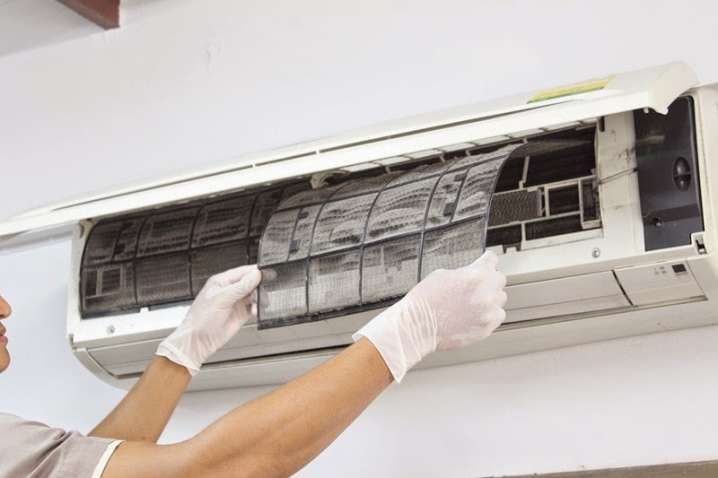
Why and how often should you clean?
Regular cleaning of the air conditioner is a mandatory event that you can do yourself or call specialists for this. Timely removal of dust and dirt from the internal elements of the device will prevent not only their clogging, but also the reproduction of dangerous microorganisms, which, together with air currents, will enter the room.
Substances that provoke clogging of the device:
- dust;
- fat from cooked food;
- animal hair;
- various insects.
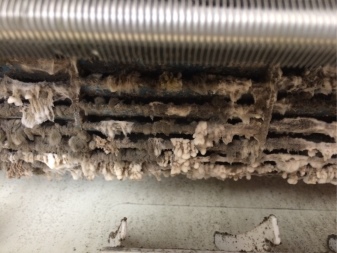
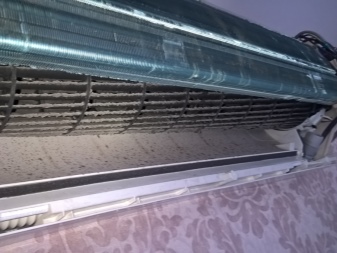
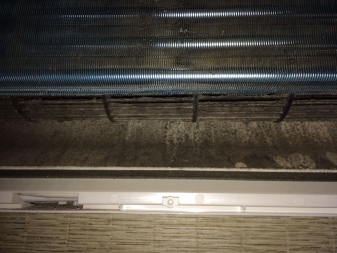
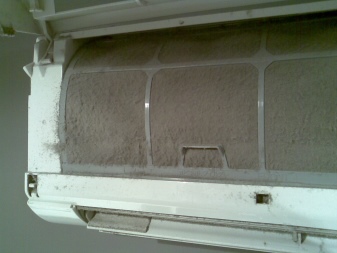
Experts recommend cleaning the internal and external elements of the air conditioner at home at least 2 times a year. The optimal time for cleaning is spring and autumn. Despite these recommendations, the number of outdoor unit cleanings directly depends on the height of its location:
- not higher than 4 floors - every 3 months;
- from the 5th floor to the 8th floor - once a year;
- above the 9th floor - once every 2 years.
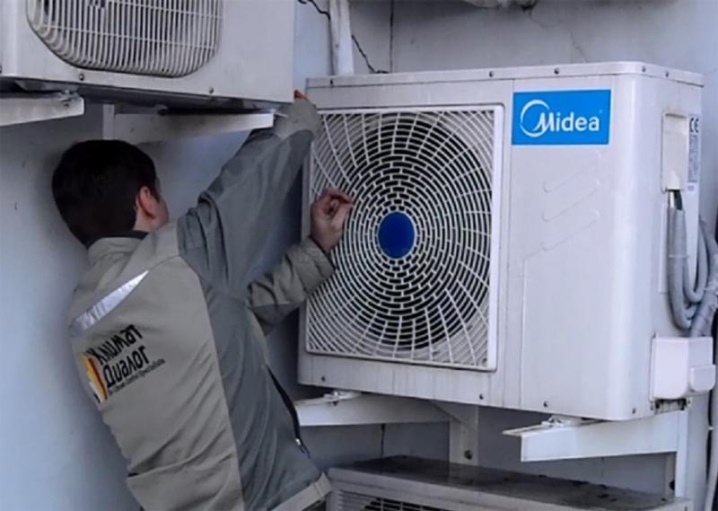
The internal filters are best cleaned every 30 days. The drainage of the structure must be cleaned as it becomes dirty and when damp spots appear.
It is necessary to increase the number of cleanings if the house is located near the roadway or in an industrial zone, as well as during the period of mass flowering of poplars and in areas of intensive construction work.
During the validity period of the warranty card, it is strictly forbidden to disassemble the device yourself. The presence of even minor damage will lead to the refusal of the service center to eliminate the defects.
With careful and careful use of the device, as well as observing all recommendations for the operation and maintenance of the device, manufacturers guarantee at least 10 years of its operation without breakdowns and repairs.
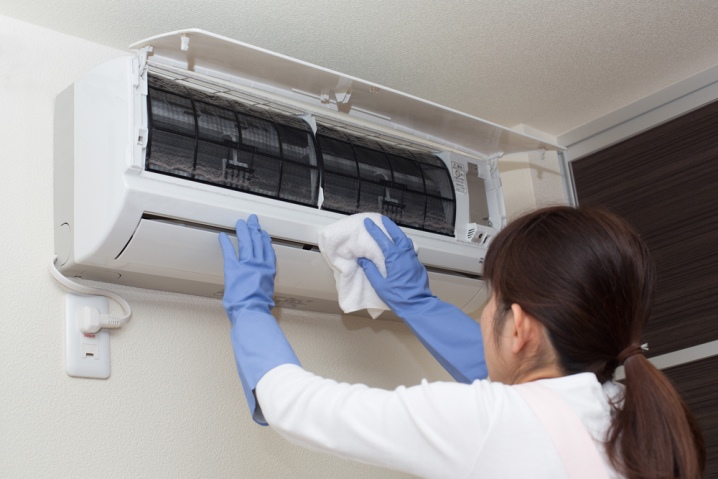
Air conditioner operating rules:
- work only with closed windows and doors;
- operation of the device at maximum and minimum power only in exceptional cases;
- turning on the device only at an acceptable temperature range of the environment (inverter up to -10 degrees, with a winter compressor - up to -20 degrees, classic devices - up to -5 degrees);
- regular maintenance;
- installation of the indoor unit as far as possible from direct sunlight;
- mandatory activation of the ventilation mode after a long idle period;
- elimination of barriers to the movement of air flows;
- mandatory installation of a protective visor over the external unit, which will protect the device from precipitation;
- removal of ice and snow from a structure installed on the street in the winter;
- carrying out regular ventilation of the room.

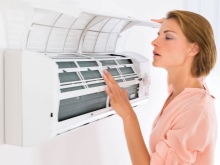
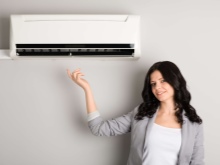
It is strictly forbidden to put indoor flowers and decorative items on the device, and you must also carefully monitor that poultry and animals do not sit on it. For safety reasons, do not touch the device with wet hands.
Experts recommend paying attention to the signs, upon detection of which, self-repair of the device is strictly prohibited:
- traces of metal corrosion on the heat exchanger;
- inability to turn on the device;
- failure of some options;
- self-shutdown of the device;
- lack of condensation from the drain pipe;
- the presence of moisture in the indoor unit;
- lack of cold air streams;
- high level of pollution;
- the presence of a greasy film on the fan blades of the indoor unit;
- the need for thorough cleaning of the outdoor unit;
- the presence of faults in the electronic control unit.
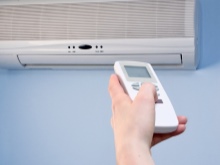

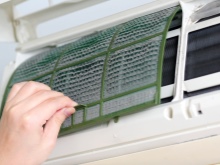
Experts recommend paying attention to the well-being of others in a room with an air conditioner operating.
If there is a sore throat, redness of the eyes and lacrimation, then it is necessary to turn off the device, ventilate the room and call the service center specialists.
Signs of contamination
In order to understand whether the old device needs cleaning, it is necessary to take a close look at its operation, in which there should not be even minimal deviations. Experts recommend paying attention to the following characteristic signs of clogging:
- the presence of constant or intermittent noise and crackling;
- excessively loud operation of the ventilation system;
- consumption of large amounts of energy;
- decrease in power;
- the appearance of tapping;
- the presence of a specific smell of mold and dampness;
- the appearance of the sounds of boiling water;
- low level of room cooling;
- the presence of streaks.
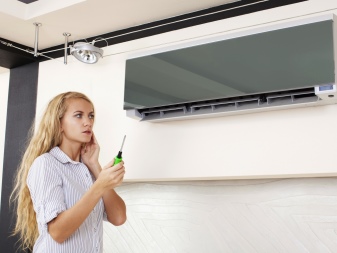

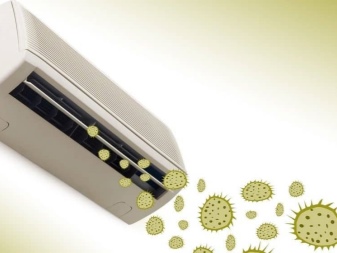
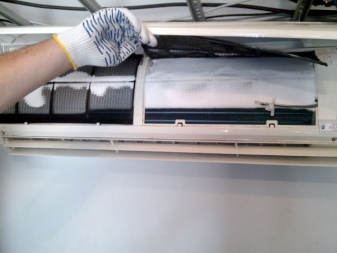
Most of the problems arise from the accumulation of dust and dirt on the radiators of the indoor unit and the outdoor unit, which leads to a deterioration in heat transfer between freon and air. This factor makes the compressor turn on more often, which leads to its rapid wear, as well as an increase in electricity consumption. Constant operation of the compressor and an increase in the power of the device does not give the desired effect due to the difficult passage of air masses through the filters, the cells of which are filled with dust and dirt.
The appearance of an unpleasant odor is provoked by microorganisms that live and multiply in the indoor unit, in which condensation drops create a humid and warm environment. Extraneous sounds and noise provokes dust, which accumulates on the working elements of the device and interferes with their operation.

Necessary cleaning agents and tools
Before starting work you need to prepare the following inventory:
- individual protection means;
- screwdriwer set;
- a spray bottle for spraying detergents;
- vacuum cleaner;
- soft sponges and rags;
- small medium-sized brushes;
- Toothbrush;
- detergents;
- laundry soap;
- warm water;
- basin or other container.
For self-cleaning of the device, experts recommend purchasing special detergent and antiseptic solutions.

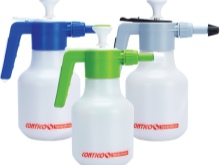

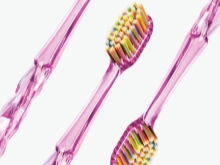
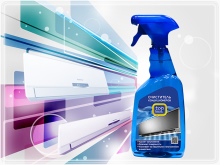
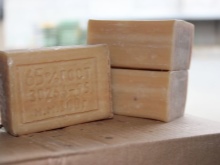
The most popular are Alfadez, Shumanit, Domo, Korting K19, RTU, Nanopyrite, Top House.
In the absence of the possibility of acquiring the above formulations, experts recommend using more affordable cleaning products:
- liquid dish detergent - coarse cleaning of filters;
- laundry soap dissolved in water - cleaning the device from dirt and dust;
- chlorhexidine bigluconate solution - reading the elements of the heat exchanger and the drainage system;
- essential oils of tea tree and lemon - disinfection of all elements;
- orange essential oil - cleansing, air conditioner located in the kitchen;
- soda - removal of impurities from filters;
- hydrogen peroxide - fight against mold;
- vinegar essence - the destruction and prevention of the appearance of dangerous microorganisms.
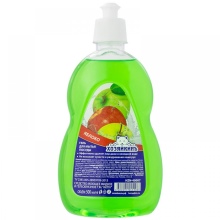
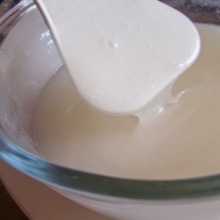



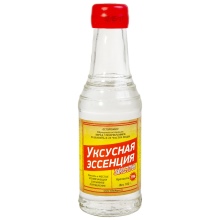
It is strictly forbidden to use ammonia, bleach, chlorine and chemical solvents during cleaning.
How to disassemble?
Before proceeding to disassemble the device yourself, it is necessary to perform a number of preparatory work:
- disconnecting the device from the mains;
- covering the area with oilcloth where dust, water and detergents can get;
- protection of the skin with personal protective equipment (respirator, goggles, rubber gloves).

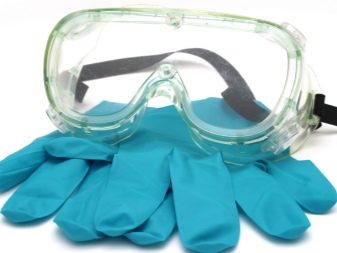
The first step in disassembling an air conditioner on your own is to study its design. It consists of elements arranged in the following sequence:
- front panel - a plastic case with a grill, for dismantling of which special locks are provided;
- coarse filter - polymer mesh with small cells, which retains large debris;
- fine filter is a multi-level element that cleans the air from various contaminants and consists of the following filters:
- carbon - an element that consists of activated carbon and only needs to be completely replaced;
- zeolite - a device made of zeolite and involved in the absorption of heavy metals; advantages - the possibility of flushing, the period of operation is more than 5 years;
- electrostatic - an element that purifies the air by means of a static field; advantages - an unlimited period of operation;
- plasma - a device whose principle of operation is based on the properties of low temperature plasma, which destroys hazardous substances and dust particles;
- ultraviolet - an element that consists of LEDs of a certain luminescence spectrum, which disinfects air flows and kills all dangerous microorganisms;
- photocatalytic - a porous element that has a titanium dioxide coating; the principle of its operation is the absorption of toxic substances, unpleasant odors, mold and pathogenic microorganisms;
- antibacterial - an element that consists of catechin, wasabi and is designed to neutralize pathogenic microflora;
- antioxidant - a device that is made from flavonoids and is involved in the transformation of radicals into inactive chemical compounds;
- fan - an element that provides air circulation;
- evaporator - a device that cools air;
- horizontal blinds - a device with which you can adjust the direction of the air;
- indicator panel - a device that shows the parameters of the device;
- vertical blinds - a device that affects the horizontal direction of the air;
- condensate tray;
- electronic control panel;
- choke connections.
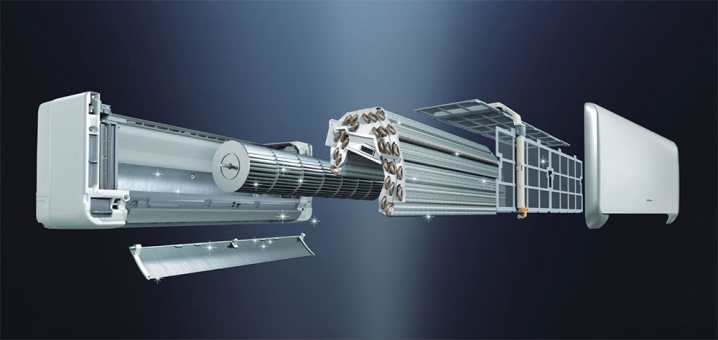
Stages of self-disassembly of the air conditioner:
- opening the front cover;
- removal of coarse filters;
- dismantling the cover covering the fasteners;
- dismantling of the display panel;
- removing the plastic case by unscrewing the screws;
- removal of fine filters.
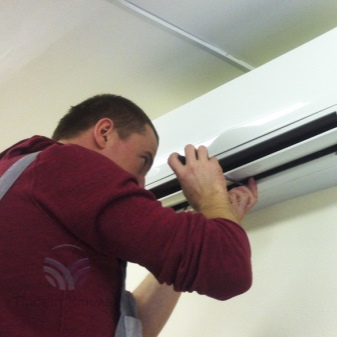
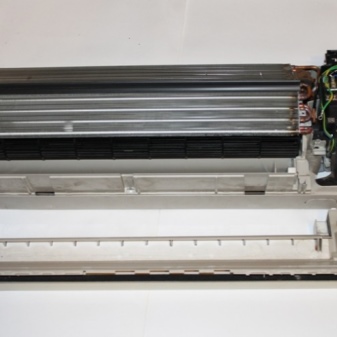
Step-by-step instruction
Before you start servicing your air conditioner at home, experts recommend paying attention to the list of works that can be done by hand:
- fan cleaning;
- cleaning the heat exchanger;
- cleaning the filtration system;
- drainage cleaning.
It is better to entrust all other types of work to the service department.
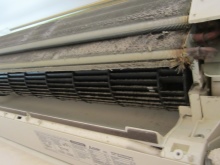
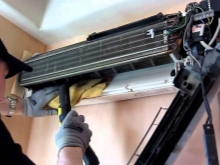
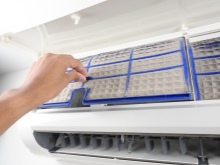
Filters are plastic nets that are most susceptible to contamination. The main stages of filter cleaning:
- opening the cover of the air conditioner;
- dismantling the strainer;
- making a soap solution by dissolving soap in warm water;
- soak filters for at least 45 minutes;
- carrying out the most careful cleaning of the plastic structure with a toothbrush and running water;
- remove moisture with a dry cloth and dry the element in the open air;
- installation of the cleaned filters in their original place.
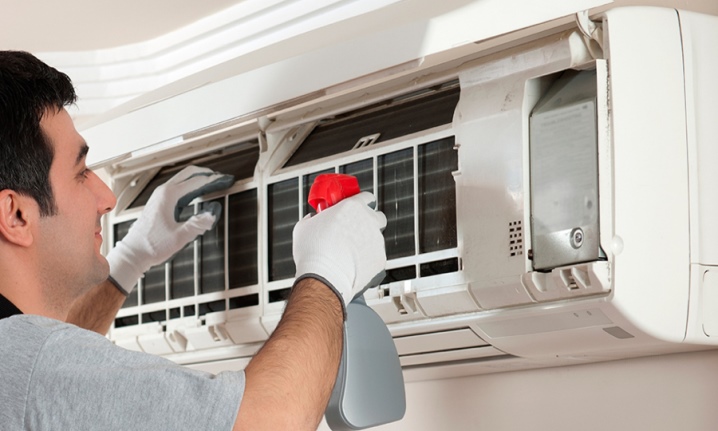
The heat exchanger is an important element that is responsible for the quality of cooling and heating of the room. Its cleaning consists of the following activities:
- opening the internal block of the device;
- dismantling the grating;
- collecting dust with a mobile vacuum cleaner operating in medium mode;
- cleaning the structure from dust and dirt with a damp cloth;
- mounting the element to its original place.

The fan is an internal element, for cleaning the blades of which it is necessary to dismantle the cover of the device and perform the following manipulations:
- switching on the device for a short period;
- removing the cover from the switched off air conditioner;
- preparation of a soap solution;
- thorough cleaning of the structure with a toothbrush;
- cover assembly.
The fan must be cleaned as carefully as possible, trying not to damage its elements.
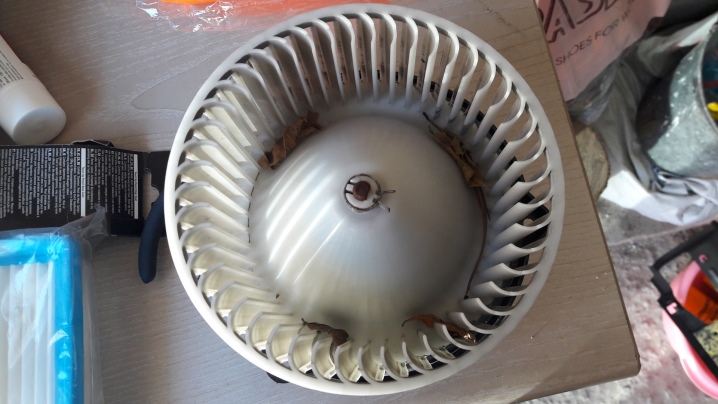
Before you start cleaning the drain of the device, you need to find an entrance to it. There are two ways to clear it:
- blowing steam into the body of the block;
- spraying an alcohol-based antibacterial agent with a spray bottle onto all cleaned elements.
Do not forget about cleaning the outdoor unit, which is not always possible to rinse yourself. Experts recommend that you independently carry out these work only in cases where the structure is within reach. It is better to entrust the cleaning of blocks that are located at a height to professionals who have special equipment and devices for cleaning. Stages of self-cleaning of the outdoor unit:
- removal of debris with a vacuum cleaner and a special brush;
- filter cleaning;
- collection of the structure;
- closing the housing cover.
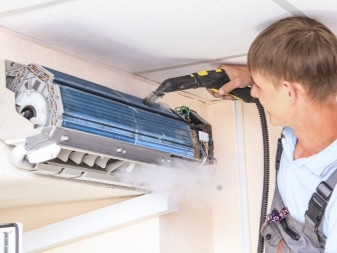

If even after all the manipulations carried out, an unpleasant odor persists, experts recommend removing the filters, turning on the device in the air recirculation mode and sprinkling a special antiseptic solution in the air suction zone. After a few minutes, turn off the air conditioner. After a while, the device can be used in standard mode.
Carrying out regular and timely cleaning of the air conditioner is not only necessary, but also vital. Devices that work for a long period of time without cleaning not only emit an unpleasant odor, but also fill the air currents with dangerous bacteria and microorganisms that can provoke the development of bronchial asthma, allergies and inflammation of the upper respiratory tract. You can hold this event both on your own and with the help of specialists from service centers. Given the high level of contamination of air conditioners, manufacturers have developed unique devices equipped with an automatic cleaning system.
It is these devices that can be attributed to the technology of the future, the process of operation and cleaning of which is fully automatic and autonomous from humans.
For information on how to clean the air conditioner yourself at home, see the next video.













The comment was sent successfully.